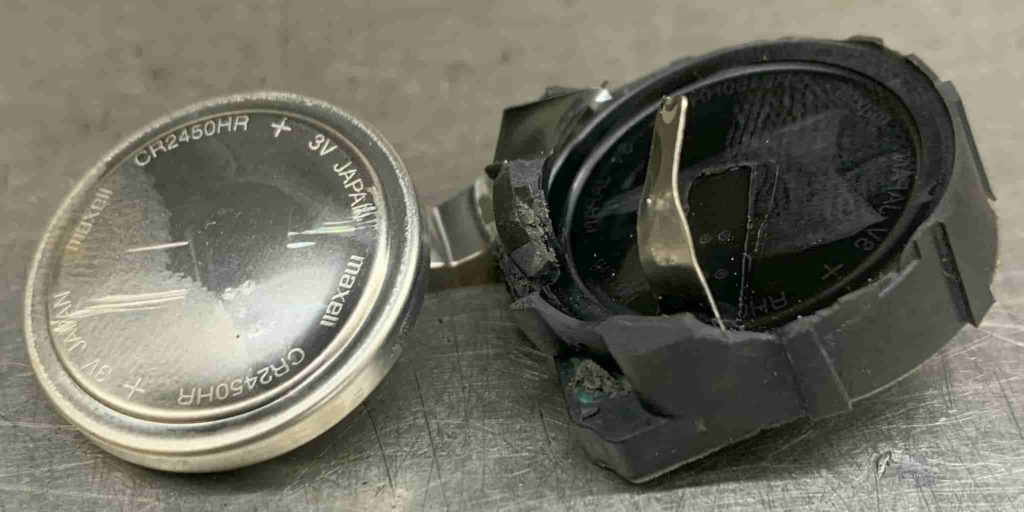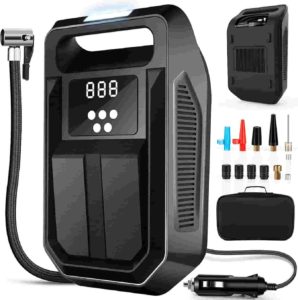Why is the Lexus Tire Pressure Monitoring System Important?
The Tire Pressure Monitoring System (TPMS) in your Lexus LS monitors your car’s tire performance, guaranteeing optimal tire pressure. This underrated hero plays an essential role in maintaining fuel efficiency, prolonging your tires’ life, and most importantly, preserving your safety. Are you prepared for an in-depth exploration of this motoring wonder? Fasten your seatbelt as we journey through the intricacies of the TPMS system in your Lexus LS.
How Does the Lexus LS TPMS Work?
The Lexus LS Tire Pressure Monitoring System (TPMS) is an intelligent system that is designed to help you maintain optimal tire pressure, enhancing safety, fuel efficiency, and overall performance. Here’s a detailed overview of how it works:
1. Sensing the Pressure:
The system has Tire Pressure Monitoring Sensors attached to each wheel inside the tire. These sensors are designed to constantly monitor the air pressure inside the tires. They are powered by a small, built-in battery and are programmed to wake up and take a reading at set intervals or when the car is moving.
2. Transmitting Information:
These sensors transmit the pressure information wirelessly to a control module, also known as the receiver. This is done via radio frequency signals. The signal includes data such as the tire pressure, temperature, and sometimes the sensor’s battery status.
3. Interpreting Data:
The control module processes the data received from each sensor. It then cross-references this information with the manufacturer’s recommended tire pressure levels for the specific model of Lexus LS you’re driving. This optimal tire pressure level is typically given for cold tires, so the system takes into account factors like tire temperature and the impact this can have on tire pressure.
4. Dashboard Notification:
If the tire pressure is found to be too low (usually 25% below the recommended level), the control module triggers a warning light on the vehicle’s dashboard – the TPMS light. This is an indication that at least one tire is significantly underinflated. The Lexus LS has a more advanced TPMS which can indicate which tire is underinflated.
5. Direct TPMS:
The Lexus LS uses a direct TPMS, meaning it directly measures the pressure in tires. It uses an advanced system that displays the actual tire pressure readings for each tire, not just a warning light.
6. Resetting the System: Once you’ve addressed the issue by inflating your tires to the correct pressure, the system should reset, and the TPMS light will turn off.
Tire Pressure Sensor Batteries
The energy source for each tire pressure sensor is a sealed battery. It’s crucial to understand that these batteries are not designed for replacement. Bearing resemblance to wrist watch batteries, they are fixed to the sensor’s internal circuit board. Once the battery runs out of power the entire sensor unit necessitates replacement. The lifespan of the battery can fluctuate based on several factors including driving conditions and environmental climate. On average pressure sensor batteries tend to last between 5 and 10 years.
Resetting and Troubleshooting the Lexus TPMS
Lexus LS Tire Pressure Light Reset Procedure
Steps to Reset TIre Pressure Light:
Adjust the tire pressure to the recommended cold pressures.
Stop and shut off the vehicle and switch the ignition to the ON Position. (engine off, push the push start button twice without your foot on the brake)
Using the arrow buttons on the right side of the steering wheel, scroll over and select the gear icon. (Vehicle Settings)
Scroll down using the down arrows on the steering wheel and select TPMS or TPWS.
Hold down the OK button on the steering wheel on “Set Pressure” until the tire pressure light blinks 3 times.
Release the button after the tire light has finished blinking.
Drive the Lexus for 15 minutes or more at 25 mph or more or until the PSI of each tire is displayed on the information display.
Older Lexus LS Models Reset Procedure
If your Lexus LS doesn’t have the TPMS or TPWS setting on the information display, check under your steering wheel for the reset button.
Find a safe location and park your vehicle. Turn off the engine.
Don’t move the vehicle during this process.
Adjust the tire pressure to the recommended level
Remember, the tire pressure warning system uses this pressure level to function.
Turn on the engine but don’t start it (IGNITION ON mode).
Press and hold the tire pressure warning reset switch until the warning light blinks three times slowly.
The display will show “–” for each tire’s pressure while the system figures out each tire’s position.
Once the system knows each tire’s position, it will show the pressure for each tire on the display.
Drive your vehicle at a speed of about 25 mph (40 km/h) for around 10 minutes.
After this, the display will show each tire’s pressure, indicating the process is complete.
If the vehicle is stopped for a long time (like at traffic lights), the process might take more than 10 minutes.
When Should You Reset the TPMS?
After Tire Rotation
After Changing a Flat Tire
After Inflation or Deflation
After Replacing a Tire Sensor
After Purchasing New Tires
After Tire Balances or Alignments
What Tools Do You Need to Reset the Lexus LS?
The only tool needed to reset the Lexus LS TPMS is an accurate air pressure gauge. The reset procedure is built into the Lexus LS ECU. Separate tools are only necessary when the tire pressure system needs troubleshooting. A TPMS diagnostic tool is needed if there’s a TPMS malfunction and you need to figure out which tire sensor isn’t working.
Understanding Tire Pressure
How to Check and Adjust Tire Pressure
Checking and adjusting tire pressure is a simple and important part of maintaining your Lexus LS. Here’s a step-by-step guide on how to do it:
1. Obtain a Tire Pressure Gauge: Purchase a good-quality digital or dial-type tire pressure gauge if you don’t already have one. These tend to be more accurate than the stick-type gauges.
2. Check Manufacturer’s Recommended Pressure: Look in your vehicle’s owner manual or the sticker inside the driver’s side door to find the correct tire pressure for your Lexus LS.
3. Ensure Tires are Cold: Tires should be “cold” when you check the pressure. Cold, in this context, means they’ve been resting for at least three hours and haven’t been driven more than a mile or so.
4. Remove the Valve Cap: Find the tire valve on your tire and unscrew the cap.
5. Check the Pressure: Firmly press the tire pressure gauge onto the valve and hold it in place. The gauge will display a reading of the tire’s pressure.
6. Compare with Recommended Pressure: If the reading is lower than the recommended pressure, you’ll need to add air. If it’s higher, you’ll need to let some air out.
7. Adjust the Pressure:
To Inflate: Attach an air compressor to the tire valve. Press the lever on the compressor to add air in short bursts while checking the pressure in between. Continue this until you reach the recommended pressure.
To Deflate: Briefly press the small stem inside the valve with your fingernail or the tip of a key to let out air. Check the pressure often to avoid letting out too much.
8. Replace the Valve Cap: Once you’ve adjusted the tire pressure correctly, ensure to replace the valve cap. This helps protect the valve from dust and debris.
9. Repeat for all Tires: Repeat steps 4 to 8 for all the tires, including the spare if you have one.
2023 Lexus LS Tire Size and Pressure
TIRE SIZE | FRONT PSI | REAR PSI |
245/50R19 | 36 | 36 |
245/45/R20 | 35 | 35 |
245/45RF20 | 36 | |
275/40RF20 | 36 | |
SPARE | 60 | 60 |
How Does the Weather Affect Tire Pressure?
Weather conditions can greatly influence tire pressure in your Lexus LS, particularly with changes in temperature. As a rule of thumb, for every 10-degree Fahrenheit drop in temperature, tires will lose approximately 1-2 psi of pressure. This is due to the physical properties of air, which contracts when cooled and expands when heated. In colder weather the air molecules inside your tires slow down and take up less space, leading to a reduction in tire pressure. In hot weather the air inside the tires expands and increases the pressure. It’s essential to regularly check your tire pressure, especially during seasonal changes, to ensure optimal performance, fuel efficiency, and safety of your vehicle. (Don’t be alarmed when your tire pressure light comes on after a cold night!)
TPMS Warning Signals and Safeety Considerations
What Causes the TPMS Light to Come On?
Tire puncture or leak: A sharp object or road debris like a nail or screw may puncture a tire, causing air loss which will of course activate the warning light.
Vehicle weight overload: Too much weight on, in, or being towed by the vehicle.
Seasonal temperature changes: A drop in ambient temperature can cause tire pressure to decrease, triggering the warning light.
Faulty tire pressure sensor: Damaged or malfunctioning sensors may provide inaccurate readings, resulting in a false alert. The only way to determine which sensor is faulty is to scan each sensor with a TPMS diagnostic tool.
Valve stem issues: A damaged or leaking valve stem can lead to gradual pressure loss and eventual activation of the tire pressure light. They make kits to replace the rubber gasket that usually goes bad.
Tire damage: Impact from potholes or hitting a curb can cause structural damage like tire bubbles, leading to pressure loss.
Sensor battery life: TPMS sensors are battery-powered, and over time, batteries die. (they usually last anywhere from 5-10 years) This will cause the tire pressure light to turn on and flash.
Recent tire rotation or replacement: If the tires have been recently rotated or replaced, the TPMS may need recalibration to avoid false alerts. The vehicle’s computer may think the front tires are in the rear and rear in the front after a rotation.
Wheel issues: Damaged, corroded, or cracked wheels can lead to air leaks and pressure loss. This is very common with low profile tires.
Altitude changes: Climbing or descending in elevation can affect tire air pressure and trigger the TPMS warning. An additional 1.5 Psi per Km above sea level is required.
Natural pressure loss: Tires lose air pressure over time due to temperature changes and permeation. Tire dry-rot will happen to tires that sit.
Electrical problems or software issues within the car’s TPMS system. Occasionally the system may have a software update from Lexus.
Snow Tires: If you have a separate pair of wheels for your snow tires, you can either transfer the sensors from your summer wheels or acquire an additional set of 4 sensors for the second pair of wheels. However, if you are using the same wheels for both sets of tires, there is no need to be concerned about this.
Is it Safe to Drive with the Tire Light On?
We emphatically advise against operating your vehicle if the tire pressure warning light is active, as this could jeopardize your safety. Determining the root cause of the problem is crucial. Could there be an external object, like a nail or screw stuck in the tire tread? Could there be a leak at the bead seal? Is the tire losing air quickly or at a slow rate? Pinpointing the exact issue is the only reliable method to evaluate if it’s truly safe to drive with the tire warning light active, and if so, for how long. This is precisely why having a portable tire inflator readily available in your vehicle is a wise safety precaution.
What are the Impacts of Driving with Underinflated Tires?
Driving with underinflated tires in your Lexus LS can lead to several negative consequences, including:
Reduced Fuel Efficiency: Underinflated tires have higher rolling resistance, meaning your car’s engine needs to work harder to keep the car moving, thereby consuming more fuel.
Decreased Handling: The vehicle’s steering response may be sluggish, making it harder to control, particularly in sharp turns or sudden maneuvers.
Increased Tire Wear: Underinflation results in uneven tire wear, especially along the edges of the tire tread. This can shorten the lifespan of your tires significantly.
Greater Risk of Tire Damage: Underinflated tires are more susceptible to damage such as cuts, punctures, and even blowouts due to less structural integrity and increased contact with road hazards.
Extended Braking Distance: Less tire pressure can lead to longer stopping distances, potentially increasing the risk of accidents.
Ride Comfort: An underinflated tire can lead to a less comfortable ride, causing more bumps and vibrations.
Overheating: Underinflated tires can generate excessive heat, which can further weaken the tire and increase the risk of a blowout, particularly during high-speed driving or in hot weather.
Increased Stress on Suspension: Because underinflated tires don’t absorb road shocks as well, more stress is placed on the suspension components of your Lexus LS.
What is the TPMS Malfunction Indicator?
Your Lexus LS is equipped with a specialized warning light to signal potential problems with your Tire Pressure Monitoring System (TPMS), known as the TPMS malfunction indicator. It employs the same yellow exclamation mark symbol used by the standard tire pressure warning light. If the TPMS is experiencing issues, this light will blink for roughly a minute before it remains constantly illuminated. This pattern will repeat each time you start the vehicle until the problem is rectified. When your tire light is blinking, it indicates that the system may not be capable of accurately identifying low tire pressure. Essentially, a flashing tire pressure light usually denotes a fault within the TPMS itself, not necessarily a direct concern with tire pressure.
What Causes the TPMS to Malfunction?
Using non Lexus wheels or tires.
Radio frequency interference from certain electronic devices may disrupt the TPMS’s functionality, impeding its capacity to accurately monitor tire pressure.
If your Lexus LS is outfitted with extremely dark window tints, they could potentially interfere with the radio signal transmission between the TPMS sensors and the Engine Control Unit (ECU).
If the tire pressure is extremely high.
Driving with the spare tire on, if your Lexus LS spare tire doesn’t have a pressure sensor in it. (If your spare tire is a full size spare and not a donut, it has a sensor in it.)
If wheels without tire pressure sensors are installed on the car.
If there is freezing ice or snow on or around the tire valves.
If the Lexus LS receiver module/ECU does not recognize new tire pressure sensors installed.
dfdws
Tire Leaks and Solutions
Why is My Tire Light on But My Tires Are Fine?
Your tire light will only be on for a handful of reasons. First of all, just because your tires look fine does not mean that the pressure is fine. Double check your tire pressure and make sure all 4 tires including the spare tire are at the correct pressure. If they are all good, move on to the next question. Ask yourself did the weather change dramatically recently? Does the tire light go off after you add air and then come back on once you start driving? If this is the case, you have a leak in the tire somewhere. If your pressures are all at the recommended pressures and not losing air yet the tire light is still on you likely have a faulty tire pressure sensor from the battery dying (TPMS malfunction).
Identifying the Source of a Tire Leak
To locate the origin of a tire leak, first, examine the air pressure in each tire to identify the one that is underinflated. Then, pump air into the deflated tire since this method won’t be effective if the tire is completely airless. Next, fill a spray bottle with a blend of water and soap (or Windex) and generously spray the entire tire. Focus particularly on the bead area (where the tire connects with the wheel’s rim) and the valve stem. Ensure that the entire surface of the tire is thoroughly soaked. Wait for a few moments and then meticulously observe the tire for any tiny bubbles, checking both the exterior and interior of the tire. If there is a leak and the tire has been doused with the soapy solution, the air escaping from the tire will create small bubbles at the leakage point. Patience is key in spotting these bubbles. If the tire is losing air, there’s certainly a leak somewhere so keep looking!
Are Tire Plugs Safe?
Absolutely! From my personal experience of utilizing tire plugs to repair hundreds of tires, I can confidently attest to their dependability. Tire plugs serve as a reliable solution for punctures in the tread area of the tire. They are engineered to be inserted directly into the puncture caused by objects like nails or screws, effectively sealing the hole and preventing air leakage. (However, remember to remove the offending object that created the hole in the first place.) Tire plugs are crafted from strong rubber-like materials capable of withstanding harsh conditions inside a tire, including significant variations in air pressure and temperature. If correctly installed a tire plug will last for the remaining life of the tire. Nonetheless, it’s important to remember that tire plugs should not be used to repair the sidewall of a tire.
Are Tire Sealants Safe?
Tire sealants can offer a quick fix for a flat tire on your Lexus LS during emergencies but they’re not intended for long-term use. These substances have the potential to significantly damage your tire pressure sensors because the sealant can destroy the sensor’s electronic circuit board, leading to its malfunction. Tire sealants can also inflict harm on the tire itself. They can disturb the balance of the tire, resulting in strong vibrations in the steering wheel while driving. This is because you’re essentially filling the tire with a liquid. For all of these reasons, we suggest avoiding using tire sealants unless it’s absolutely essential. If you ever find yourself in a situation where the use of a tire sealant becomes necessary, make sure to get your Lexus to a tire repair shop as soon as possible.
Resetting the Lexus LS ECU
If all attempted troubleshooting methods have proved ineffective and the tire warning light continues to stay on, you might need to perform a full reset on your Lexus LS’s computer system. This is achieved by disconnecting the battery for several minutes. To avoid potential short-circuits, always start by disconnecting the negative terminal. You’ll need a 10 or 12mm wrench or socket to loosen the nut on the terminal. Once the battery is disconnected it disrupts the power supply to the Engine Control Unit (ECU). This erases all stored error codes, including the one triggering the tire pressure warning light. This process also resets the adaptive memory settings of the computer. This can include things such as radio settings, power seat settings, etc. Upon reconnecting the battery your Lexus LS will start a “relearning” process, recalibrating all its sensors and actuators. To finalize the relearning process, drive the car at a speed of 50 Mph for a minimum of 30 minutes.
How to Install and Calibrate New Tire Pressure Sensors
To start, the wheel must be detached from the Lexus LS followed by the tire’s removal from the wheel to access the sensor. The base of the old sensor is loosened using a small screw and removed and then the valve stem is extracted through the top of the wheel. Once the old sensor is taken out the new one can be installed. (We recommend taking a picture of each new sensor’s ID code before installation, as these numbers might be needed later and will become inaccessible once the tire is remounted to the wheel.) Make sure the new sensor is compatible with the Lexus LS’s Engine Control Unit (ECU). To install the new sensor use a tire valve removal tool to guide the valve through the valve hole in the wheel. After the new sensor is in place and the tire is mounted back on the wheel, the new sensor needs to be registered with the Lexus LS’s Electronic Control Unit (ECU). This is called TPMS relearning. The ECU is programmed with the new sensor’s unique ID code enabling it to receive signals from the new sensor. A TPMS relearning tool is necessary for this step. Each of the tire pressure sensors needs to be scanned, and the tool then has to be synced with the vehicle’s ECU. This is accomplished by connecting the TPMS tool to the Lexus LS’s OBD port which is located under the steering wheel.
TPMS and Legal Considerations
Is it a Legal Requirement to Have TPMS Sensors?
In numerous regions globally including the United States and Europe, the presence of tire pressure monitoring system sensors in vehicles is a legal obligation. The TREAD Act, passed in the U.S. in 2000 necessitates all vehicles made after September 2007 to be fitted with a TPMS. Primarily targeted at manufacturers rather than drivers, this regulation seeks to enhance road safety by informing drivers about notable changes in tire pressure. Similarly, European directives from November 2012 onward stipulate that all new passenger vehicles must have a TPMS installed. The main purpose of these rules is to mitigate accidents resulting from tire malfunctions.
Will My Car Pass Inspection With the Tire Pressure Light On?
Yes. In certain states, the tire pressure monitoring system is inspected during a vehicle’s safety examination, but the specific requirements can vary. For example, in New York and Texas the tire pressure light is assessed as part of the inspection process, but it is not a cause for failure. I am personally a licensed New Jersey state inspector and in NJ having a functional TPMS in a passenger vehicle is not a requirement. If the tire pressure light is on the vehicle will still pass inspection. Commercial vehicles are a different story because they still require “safety inspections”. The lack of uniformity between states means it is recommended to check with your local Department of Motor Vehicles or other relevant state agencies for the most accurate and up-to-date information.
Conclusion
This article is applicable to all Lexus LS models and trims including the 2024 Lexus LS 500, LS 500H, LS600H, LS460, LS430 and LS400.








